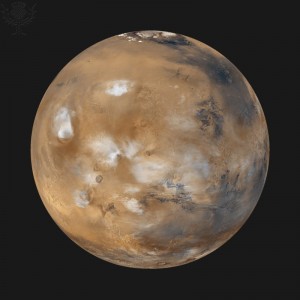Life on the Red Planet Intelligently Prepared by a True Scholar
Is there life on Mars? It’s a question that’s captivated people for over a century. People have always looked to the stars and such and wondered, “Jimminy, I wonder what’s up there!” As time has passed technology has gotten better and better, and now we are closer to the answer than ever.
One of the fundamental ideas in answering the question is how life is made. If the right ingredients and the right conditions are present, it’s thought that life can be made practically anywhere. The main ingredient in life is water. Liquid water, specifically. Water in a gaseous or solid form simply won’t do. All the chemical reactions that take place in an organism need a fluid to take place. A liquid also helps transport vital nutrients to different parts of the cell. Water is one of the greatest solvents, if not the best, in the universe. Literally everything will dissolve in water to some degree. Water also bends proteins, which act as catalysts for many of the chemical reactions in the body. Some evidence suggests that while there isn’t water in liquid form on the surface of Mars, there may have been 3.5 billion years ago.
While there is a chance that there is a living organism on Mars, the chances are greater that we will find remnants of life rather than an actual organism. One piece of evidence that life once existed there is the ALH84001 meteorite. It contains small structures inside of it that could be fossilized microbes. Some scientists claimed that this was concrete proof for life on Mars, but those claims proved controversial. While the structures in the meteorite contained minerals commonly associated with living organisms, some scientists claimed that they could be formed inorganically. Whether or not the structures are organic or not has yet to be proved.
The only way we could ever have an answer to that question is to explore Mars extensively, or at least until we found evidence pointing one way or the other. The first spacecraft to orbit Mars were launched in the 1960’s. They showed that Mars was a desolate and dry planet, putting to rest dreams of other civilizations there. The Viking 1 lander landed successfully on Mars in 1976, finding no strong evidence for life. The first Martian rover launched in 1996 with the probe Pathfinder. It began analyzing rocks on the Martian surface, but found no evidence for life. Then, in 2001, the Mars Odyssey discovered water ice in the upper three feet of the Martian surface, and there may be even more deeper under the surface. Two rovers nicknamed the Spirit and Opportunity were sent to Mars when it was at its closest to Earth in 60,000 years. They both found evidence of flowing water on the surface of mars.
The truth is that right now we don’t have the technology or the resources to fully answer this question, and we may not for some time. There is already research being done on a manned mission to mars, but that is still a long ways off. We may find signs of life then, but until then we are left wondering what’s really out there.
In what ways are we searching for life on Mars? What future projects aim to find life on Mars? What are the similarities and differences between Earth and Mars?

